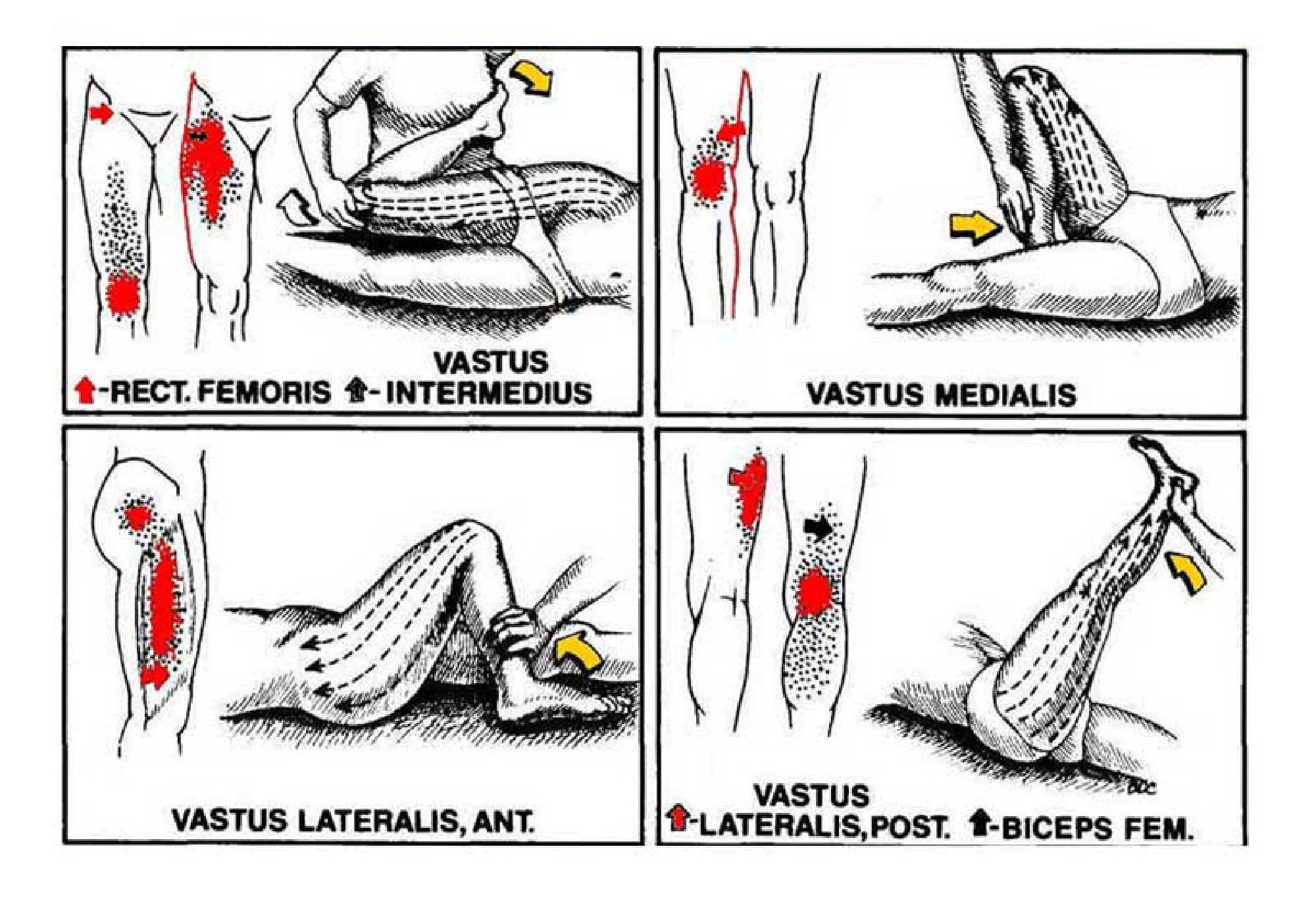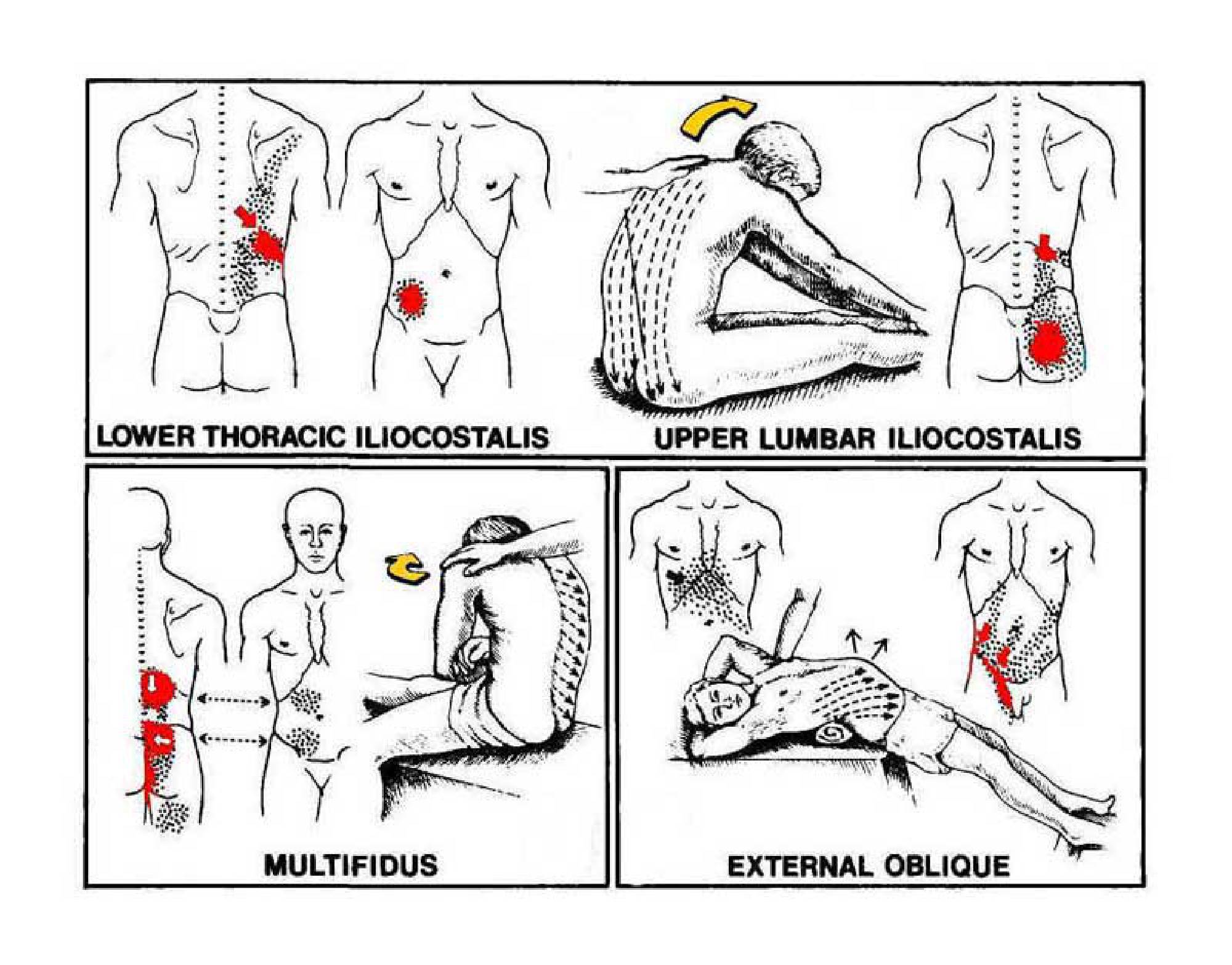Paul Manley Back Pain and RSI Clinic
Paul Manley, M.A.O.(Manip), Registered OsteomyologistFor muscle and joint problems

RSM (Royal Society of Medicine)
Specialist in the treatment of Musculo-skeletal problems
Location: 8-10 Boston Place, Marylebone, London NW1 6QH
Next to Marylebone Station, Main line trains and Bakerloo line
24/12/2025
What are trigger points?
- Trigger points are small zones of contracted muscle knots and are a common cause of pain.
- Compression of a trigger point may cause sensations of local tenderness, referred pain, or local twitch response.
- The trigger point model states that pain frequently radiates from these points of local tenderness to broader areas, sometimes distant from the trigger point itself.
What is trigger point therapy?
- Trigger points exist all over the body, many hundreds of them, from your jaw to your heel, from your pectoralis minor to your peronius tertius. All of which can produce symptoms which are amenable to my approach, one of multiple techniques all blended into one.
- Trigger points have a number of qualities.
They may be classified as potential, active or latent and primary or secondary.
- There are more than 100 potential trigger points in the lower upper limb and hands.
- These trigger points, when they become active or latent, show up in similar places in muscles in every person.
An active trigger point is one that actively refers pain either locally or to another location.
A latent trigger point is one that exists, but does not yet refer pain actively, but may do so when pressure or strain is applied to the myoskeletal structure containing the trigger point.
- The trigger points are generally located at the muscle origin, middle of the muscle, at the myotendinous junction
( where the contractile portion of a muscle becomes the non-contractile tendon portion ), in the middle of the tendon and final insertion points of the tendon.
- Great attention must be taken to the ranges of movement of the carpal bones of the wrist, for if they are lacking in their full range, symptoms will occur. This needs the ability to articulate and to manipulate the carpal bones. There are many of us who have such joint adhesions especailly of the scaphoid, lunate and hamate bones where they join with the forearm bones, the radius and ulna.
- Elbow joint problems can also be at the root of apparent RSI, these need to be manipulated as above. The radial head is a common site of irritation, often with the patient feels the pain elsewhere, farther down the top of the forearm.
- For more detailed information on the subject of RSI please read my RSI article.
-
I have recently built a separate website dedicated to helping RSI sufferers, please click here to read more....
History of similar techniques
- Neuro-muscular technique has been around since humans first experienced pain in their muscles. It is a natural instinct to squeeze and rub a painful area of muscles. The Naturopaths of the late 19th century evolved the technique.
- Myotherapy was developed in the USA after the second world war. It is similar to trigger point therapy.
- Myo-articulation uses triggerpoints but also employs simultaneous stretching of the trigger points and areas in the muscles. The technique was developed by me over many years of practice and observation. It is profoundly more effective than trigger point therapy or myotherapy alone.
Trigger points are self-evident
By exploring the anatomy of the individual we will discover the points and areas which cause pain and dysfunction. Then, when the application of trigger point techniques brings about great relief which lasts, more knowledge is added to our experiental database. Trigger points are self-evident when one has truly explored a myriad of painful syndromes presented over many years. The trick is not only to find the points and areas but to change them, physically. This is usually easily acheived but must be done in the 'right' way. It is definitely a fine art and a supreme skill combined.
On our first day at college we were told that over the next four years we would learn the entire anatomy of the body 7 times and forget it only 6 times. We thought this was a joke but it definitely turned out to be true except for the bit about forgetting it 6 times. We studied General medicine, differential diagnosis, the 3 divisions of the nervous system, Histology, Pathology, Orthopedics, Osteopathic treatment techniques, and, of course, detailed Anatomy. There are two levels of anatomical study of the muscles, that of the superficial layers and that of all 850 muscles. Most physical therapists such as masseurs, physiotherapists, acupuncturists and other variations and mini-specialisations learn only the superficial layer of muscles. This lessens their abilities dramatically. We were taught the origin, insertion, function, blood supply and nerve supply to every muscle in the body. We were also taught about the organs of the body, their physiological functions as well as the hormonal system and the glorious control mechanisms of entire human edifice. I took a deep liking to the subject of the obscure subject of the hydrodynamics of the brain in relation to the cranium and have published and lectured on the subject. I now realise that my education at the European School of Osteopathy was par excellence.
Whilst at college and for a year before, I attended my Fathers clinic regularly as, at first observer, then as participant.
From the first year at college I worked on a Friday with Dad, taking case histories, doing the 'dogs body' work on his patients, easing muscles, stretching their limbs, articulating their joints.
My learning curve was accelerated greatly by this interaction with both 'live' clinic and with the unfolding of what was beneath my hands was made real and named by my studies at college. It brought the bodies before me to life, an animated medley of anatomy, physiology and person.
07925 616 753
Location: 8-10 Boston Place, Marylebone, London NW1 6QH
Next to Marylebone Station, Main line trains and Bakerloo line






